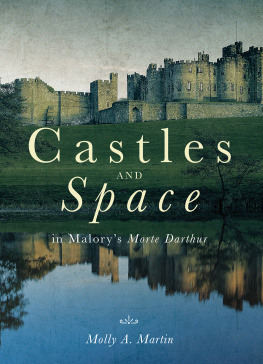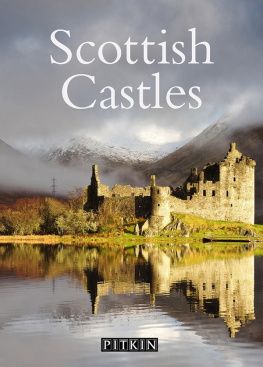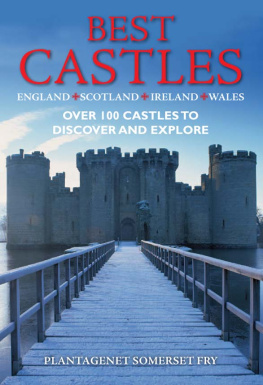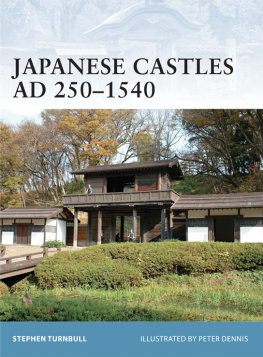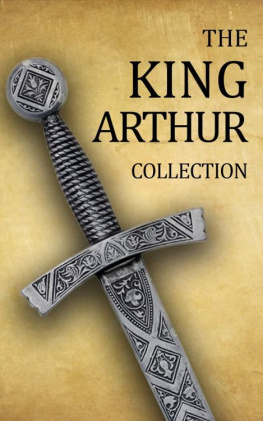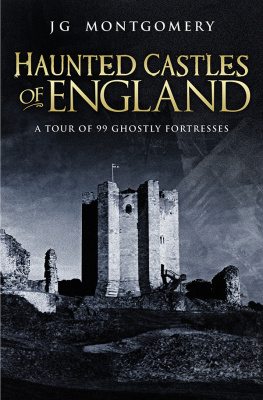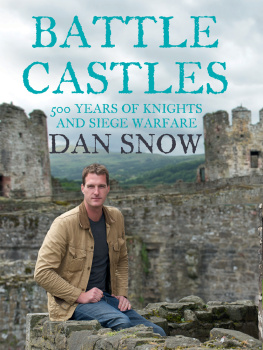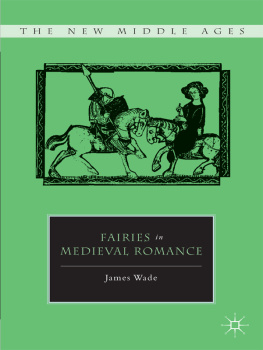
ARTHURIAN STUDIES LXXXIX
CASTLES AND SPACE IN MALORYS MORTE DARTHUR
Castles play an integral part in Malorys Morte Darthur ; Camelot, Tintagel, Joyous Gard, and Dover, for example, are the crucial backdrop to the action and both host and shape the story as it moves through them. But despite this, Malorys castles have received limited scholarly attention. As the first monograph to look extensively at either castles or space in Malory, this book aims to fill that gap. It reads the Morte through its castles - their architecture, structural and symbolic significance, and geographical locations, together with their political, communal, ritual, domestic, and martial functions. The book also traces the mutual development of space and identity in the text, looking at Malorys Arthurian community in and around castle space, both as individuals and as a group; for example, it considers Arthurs political success through his use of space, and shows how crucial Camelot and its hall are to the fellowship of knights. Overall, the volume suggests a better understanding of the communitys central organising body, the Round Table, and offers important re-readings of a number of episodes and characters.
MOLLY A. MARTIN is Associate Professor and Chair of the English Department at the University of Indianapolis.
ARTHURIAN STUDIES
ISSN 0261-9814
General Editor: Norris J. Lacy
Previously published volumes in the series are listed at the back of this book

Molly A. Martin 2019
All rights reserved . Except as permitted under current legislation no part of this work may be photocopied, stored in a retrieval system, published, performed in public, adapted, broadcast, transmitted, recorded or reproduced in any form or by any means, without the prior permission of the copyright owner
The right of Molly A. Martin to be identified as the author of this work has been asserted in accordance with sections 77 and 78 of the Copyright, Designs and Patents Act 1988
First published 2019
This edition published 2019
D. S. Brewer, Cambridge
ISBN 978 1 84384 527 0 Hardback
ISBN 978 1 78744 633 5 Ebook
D. S. Brewer is an imprint of Boydell & Brewer Ltd
PO Box 9, Woodbridge, Suffolk, IP12 3DF, UK
and of Boydell & Brewer Inc.
668 Mount Hope Avenue, Rochester, NY 146202731, USA
website: www.boydellandbrewer.com
The publisher has no responsibility for the continued existence or accuracy of URLs for external or third-party internet websites referred to in this book, and does not guarantee that any content on such websites is, or will remain, accurate or appropriate
A CIP catalogue record for this book is available from the British Library
For Fuzzy, Ferguson, Barney
Plates
The author and publisher are grateful to all the institutions and individuals listed for permission to reproduce the materials in which they hold copyright. Every effort has been made to trace the copyright holders; apologies are offered for any omission, and the publisher will be pleased to add any necessary acknowledgement in subsequent editions.
Introduction: Into the Castle
This view of space as intrinsic to human activity is in contrast to our educated error of seeing space as the background to objects, and so as the background to human behavior.
Bill Hillier
All history, it has been said, is local history. Certainly the history of individual castles can often help to explain the great political events, and much of the history of medieval England, not to speak of Wales, is locked up in its castles.
R. Allen Brown
Castles litter the landscape of Sir Thomas Malorys Morte Darthur , as they did and still do England itself. As such, these architectural and geographical landmarks serve as a constant reminder of the royal, noble, and chivalric settings of the Arthurian story. However, castles are much more than locations or settings, although that is a role they fill with more importance and even panache than one might expect. For example, Arthurs conception occurs after a breach in castle security; Launcelot breaks into and falls out of castles at crucial junctures in his relationship with Queen Gwenyver; and the schism between Launcelot and his king plays out on and around the walls of Joyus Garde and Benwick. Castles also provide the starting and ending points for many quests, which help define the knights of Arthurs Round Table. Thus, they are both the launchpads and the confirmations of knightly endeavors. Furthermore, they are seats of power political, military, economic, and so forth. They are prisons and prizes and keepers of ritual. Just as important, they are homes for many in the text. In these several capacities, these architectural structures function as representations just as much as they occupy the space of and become the physical backdrop to the Morte . Castles operate as both physical and symbolic entities in Malorys text, and they create meaning and identity both individual and communal through the literal and figurative forces they exert.
Throughout the Morte , castles influence the characters who tread around and within their walls. As a physical, a symbolic, and a social space, the castle inflects the behaviors and identities that it frames. These social and structural functions even work in conjunction with each other at times to manipulate the identities and actions on the page, augmenting and even creating meaning. Barbara Hanawalt and Michal Kobialka explain, Not only did people create uses for space, but having done so, that space could influence the behavior of those who occupied it; defining space tended to prescribe the behavior within it. This book consequently endeavors first and foremost to unpack those influences as they are manifest in Malorys text. However, space is always more complex. While the space, both physical and social, influences its inhabitants, the characters and their actions likewise define and redefine the spaces meaning. There is thus a constant interplay between space and identity; this interplay ranges from subtle to quite obvious, but it always tells us much about the Morte and its construction of the Arthurian community and its ideology.
Castles play a notable role in much medieval literature and are particularly visible in romances, where they participate in this relationship between architecture and identity to varying degrees. This is certainly true of the Arthurian corpus, including, of course, Malorys sources. However, it is my contention that Malorys emphasis on the presence and the physicality of castles at important junctures in the text an emphasis evidenced by his alteration of those sources brings to the forefront the paired influences of space and identity. While the Morte does usually share with its French and English sources the general settings of the stories, Malorys text routinely directs attention more closely to the castles themselves. Malory locates several of the legendary castles in fixed geographical locations, and thus more specifically associates them with real castles in the English landscape. On several occasions, he focuses on specific physical and architectural features within his castles, pointing to particular places and how one accesses them. This sharpened focus increases the impact that the castle, as building and as symbol, has on the construction of identity again, both communal and individual and action, as well as the correlative and reverse influence of characters on that space.
That the castle figures prominently in both the history and the imagination of the English people probably goes without saying. However, in both cases, the castle story, as Robert Liddiard and others have termed it, is quite complex. My goals and vantage point somewhat reconfigure this requirement after all, if Malory calls it a castle, its a castle but they do not negate it. It is important, and in some instances crucial, to be able to envision the castles, whether real or fictional, at least to some degree. An investigation of the mechanics of space within and around the castles of the text benefits immensely from an understanding of the physical presence of the castle, and a definition provides at least a foundation for that understanding.
Next page
